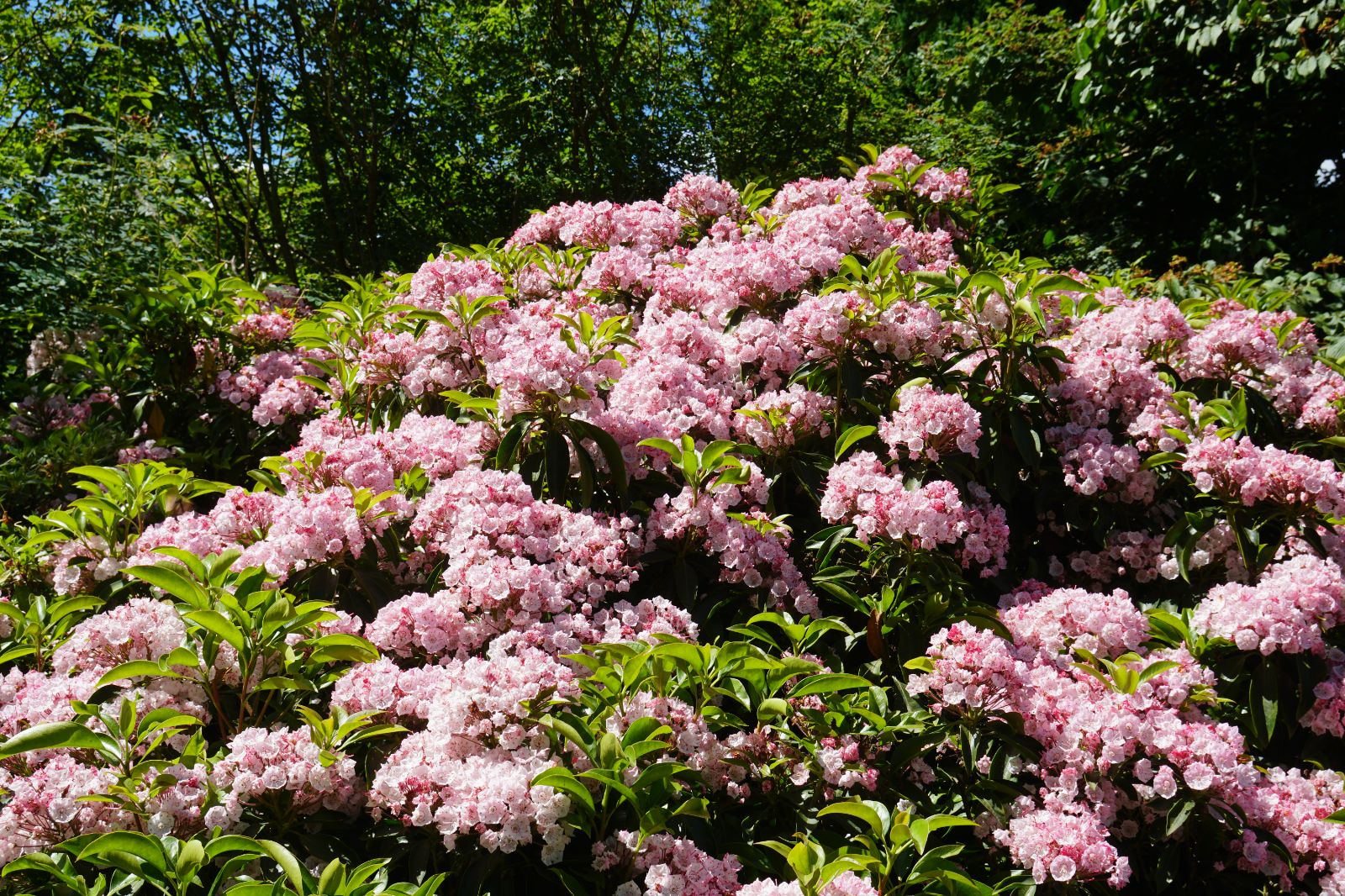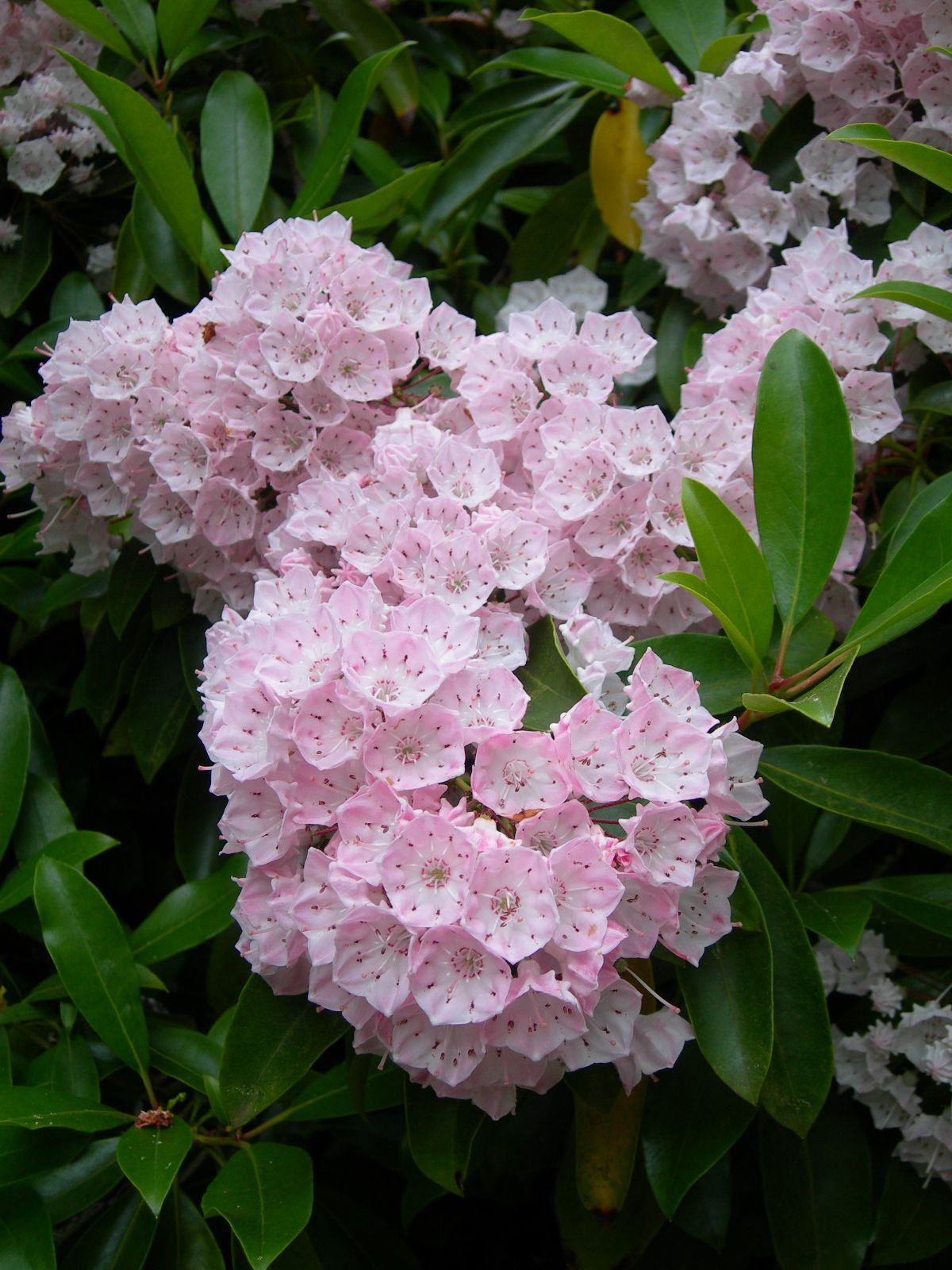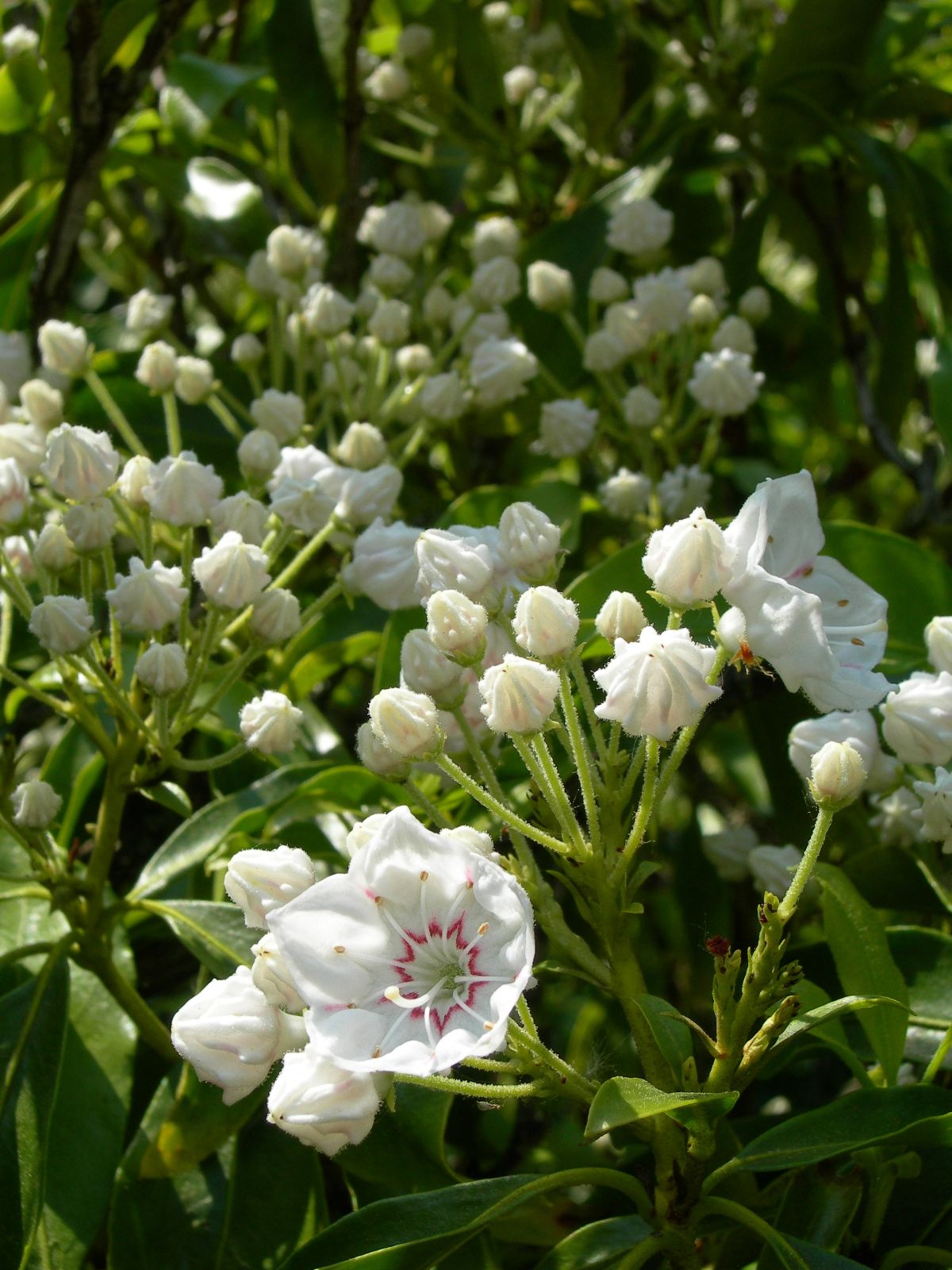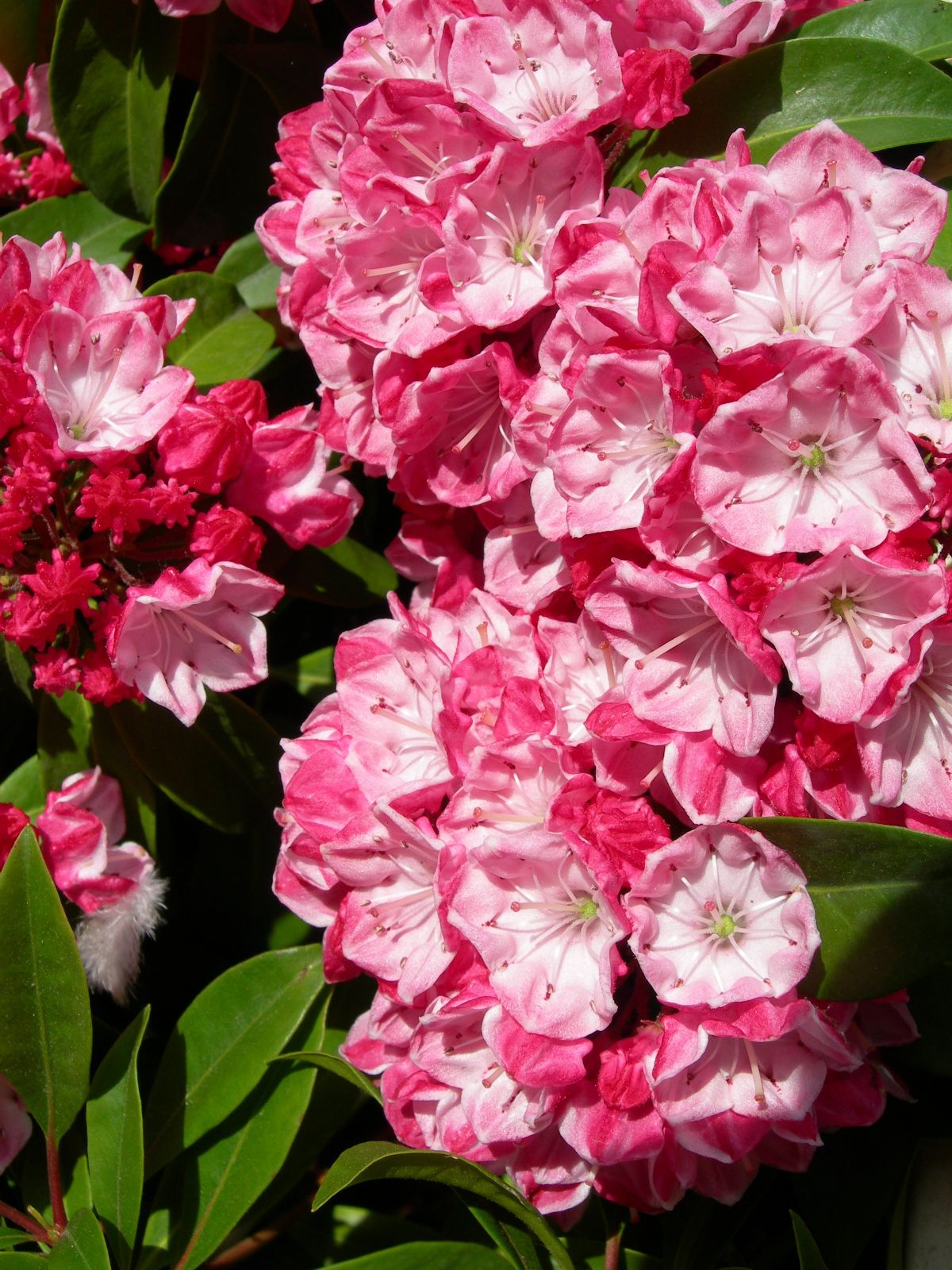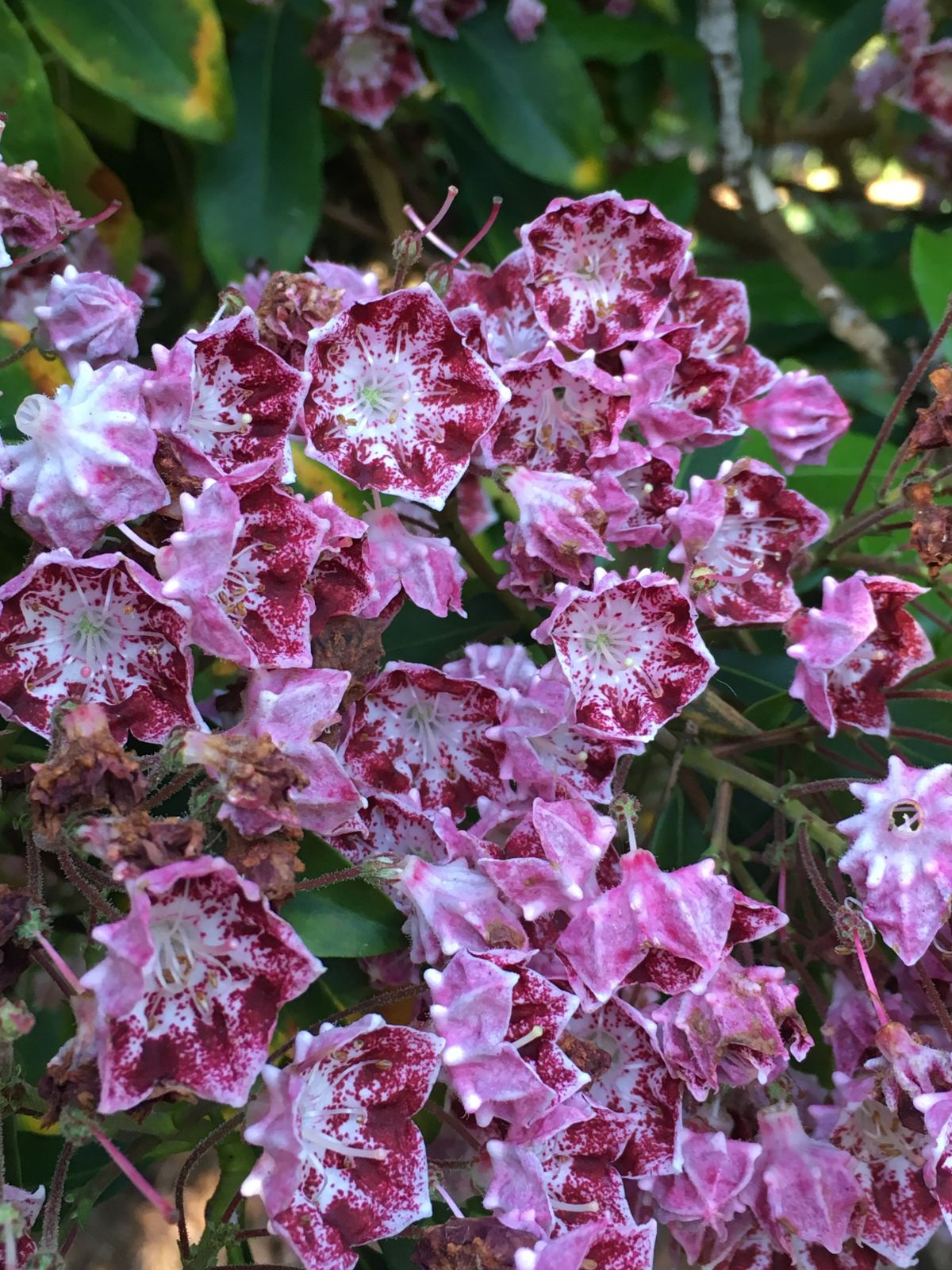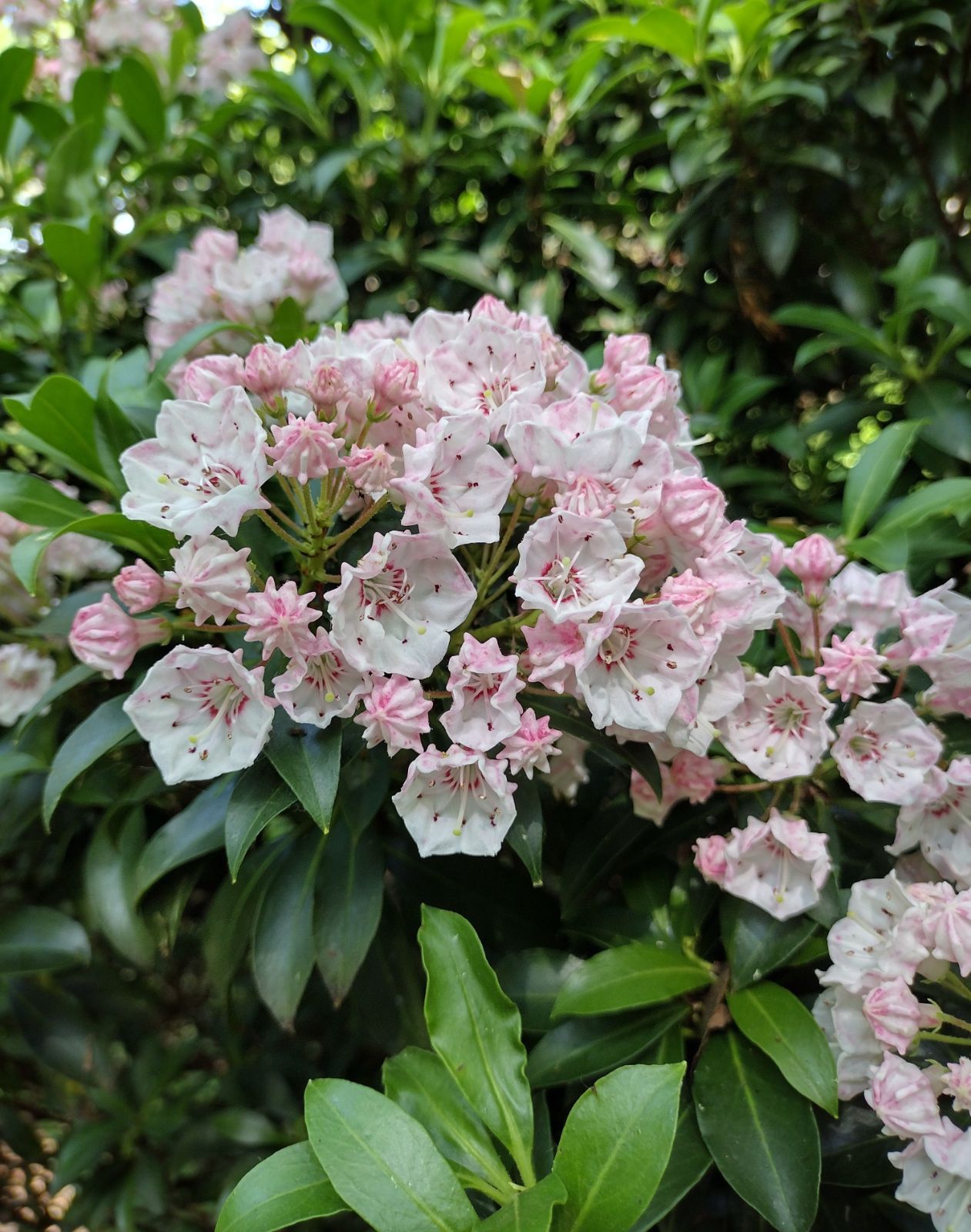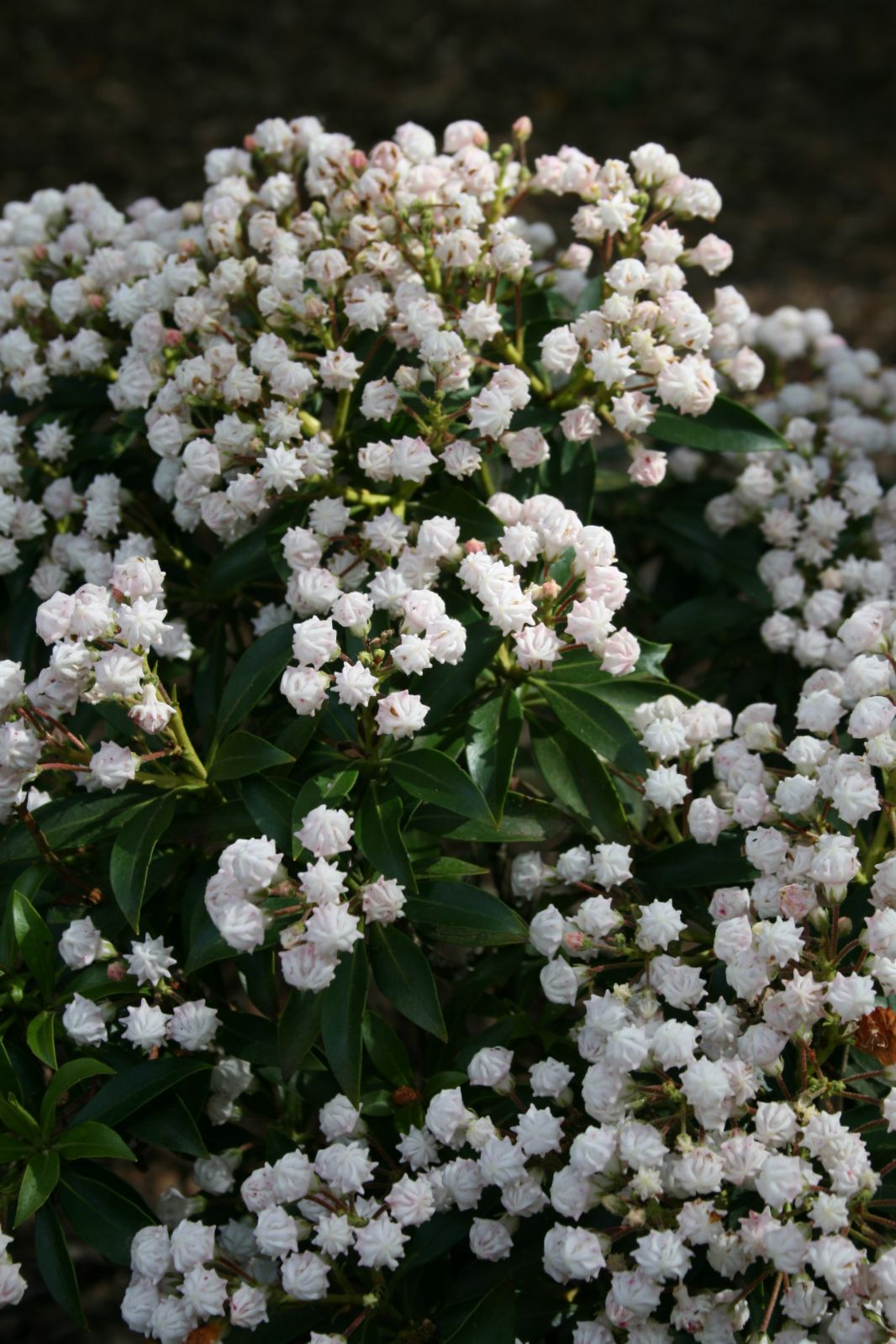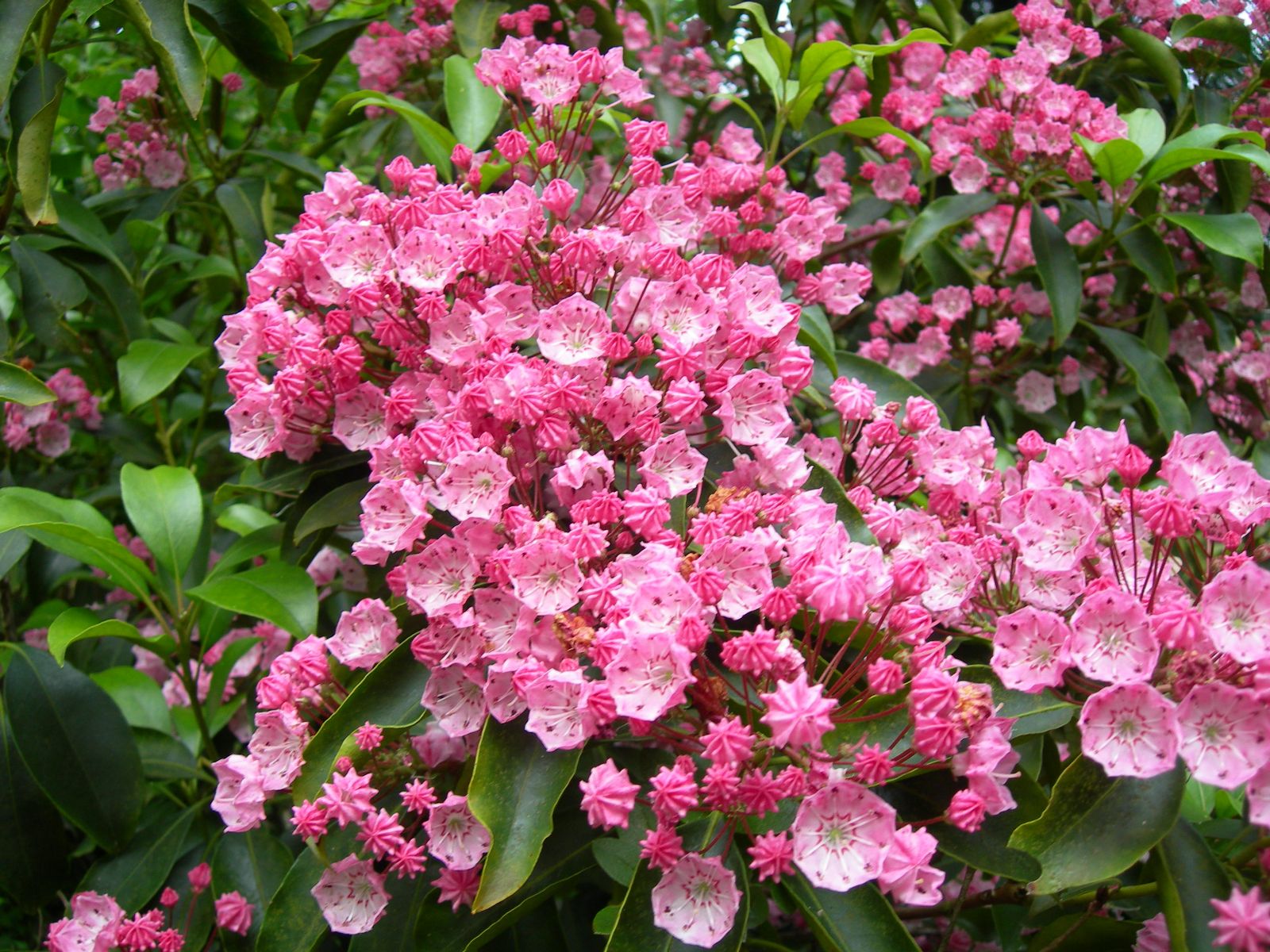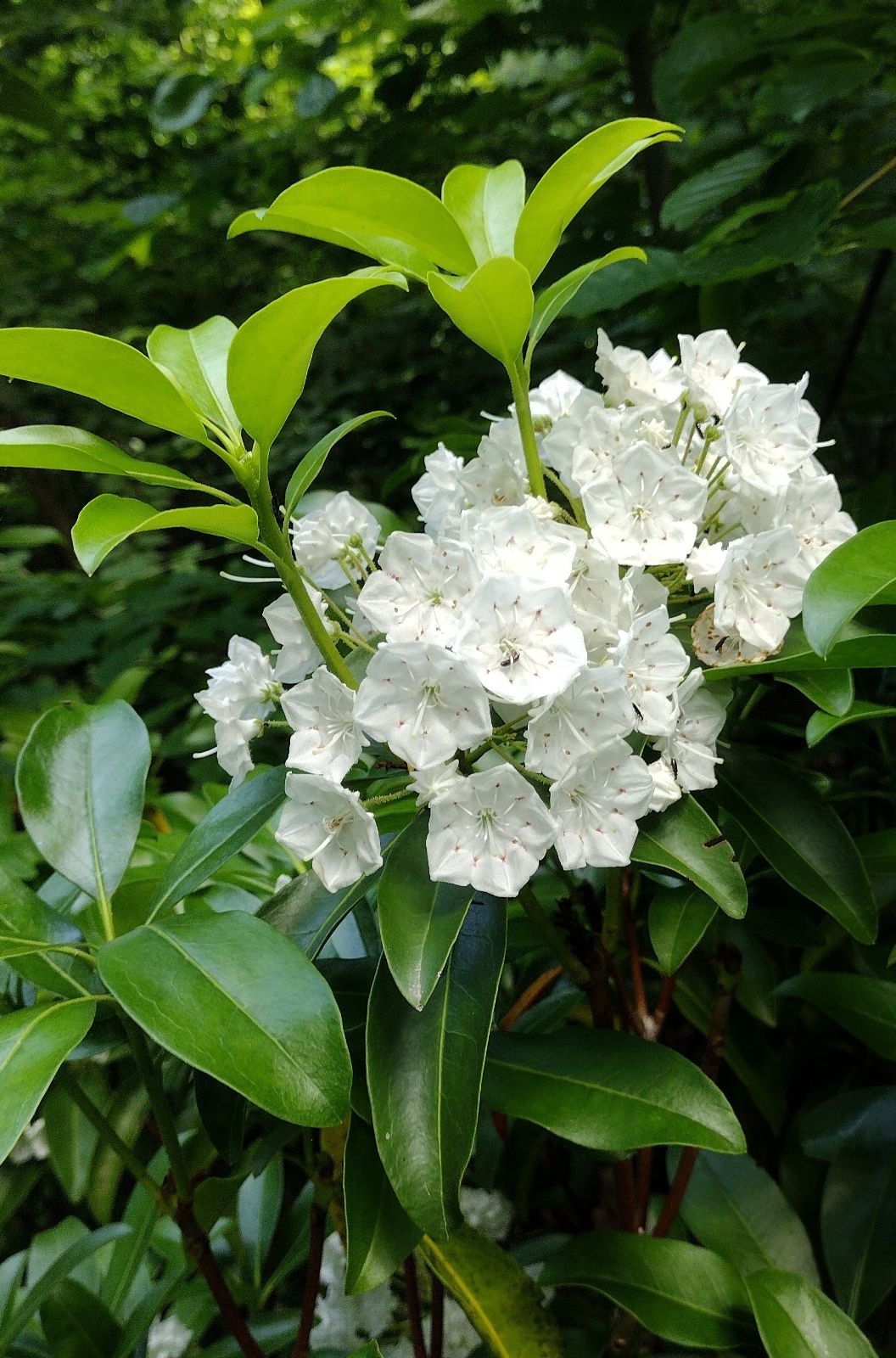Kalmia latifolia
Credits
Article from Bean's Trees and Shrubs Hardy in the British Isles
Recommended citation
'Kalmia latifolia' from the website Trees and Shrubs Online (treesandshrubsonline.
Infraspecifics
A large, robust, evergreen shrub with rather the aspect of a rhododendron when not in flower, a single plant sometimes forming a dense thicket 10 ft high, and 15 ft through; young shoots slightly downy. Leaves alternate, leathery, glabrous, rich glossy green, oval, 2 to 5 in. long, 3⁄4 to 11⁄2 in. wide, tapering at both ends, often in a cluster at the end of the twig; stalk 1⁄4 to 1 in. long. Flowers crowded in several flattish or rounded clusters, terminating the growth of the previous year, and collectively 3 or 4 in. across. Corolla saucer-shaped, 3⁄4 to 1 in. across, varying in colour from white or pale blush to deep rose, with five triangular blunt lobes. Stamens white, with brown anthers. Calyx-lobes ovate 1⁄10 in. long, covered with viscous hairs like the flower-stalk, which is slender, and 3⁄4 to 11⁄4 in. long. The flowers vary much in depth of shade, size, and density in the truss. Bot. Mag., t. 175.
Native of eastern N. America; introduced in 1734, and probably the most beautiful evergreen shrub obtained from that region. There are bushes of the dimensions given above in the south of England, but generally the species has not been planted so extensively as it deserves. It is said sometimes to be over 30 ft high in the wild. A great breadth of it in the Arnold Arboretum, near Boston, USA, 200 to 300 yards long, provides every June one of the public flower feasts of that city. I have also seen it wild on the New Hampshire Hills, where it grows in woods, but is seen at its best on grass- and juniper-covered hills sprinkled in groups, or as isolated bushes, generally 4 to 6 ft high.
From the Supplement (Vol. V)
The extreme difficulty of propagating this species by vegetative methods has hitherto prevented the production in quantity of named cultivars, though these would be desirable, given the great variability in flower-colour of its seedlings, and the reluctance of many to flower. However, clones propagated by tissue-culture are now available from at least one specialist nursery in this country. It should be added that experiments in the USA by R. A. Jaynes have shown that the younger the plant from which cuttings are taken, the more readily do they strike, a success of over 80% being attainable with material from one-year-old rooted cuttings. This suggests that if a few cuttings from a mature plant are rooted, a stock could be built up by using these to provide further propagation material.
f. myrtifolia (Jäger) K. Koch
A dwarf bush, usually 2 to 4 ft high, the largest leaves about 2 in. long. It is a pretty, neat bush, useful in places where the type is too large. It is usually propagated by seeds, and very variable in habit and size of leaf.
f. polypetalia (Nichols.) Rehd
A form in which the corolla-lobes are divided almost to the base. It was found near South Deerfield, Mass., and is merely a curiosity of no merit.f. rubra K. Koch
Flowers deep pink. K. latifolia is not an easy plant to please in the British climate and may be a failure even where rhododendrons thrive. The explanation is perhaps partly that it needs more ‘continental’ conditions than most members of the Ericaceae. Also, it is evidently a variable species and, being difficult to propagate vegetatively, it has been commonly raised from seeds, which yield plants of unequal merit, some of which are reluctant to flower. At Sheffield Park in Sussex, A. G. Soames selected many fine seedlings, of which one – ‘Clementine Churchill’ – received an Award of Merit in 1952. This has been successfully propagated by cuttings and will eventually become available in commerce. The Sheffield Park strain derives from selected plants raised in the Knap Hill nursery and from one sent by Prof. Sargent from the Arnold Arboretum (Journ. R.H.S. Vol. 59 (1934), pp. 98–100). Provided it is kept mulched, it is best grown in almost full sun and preferably in groups, away from other shrubs.

